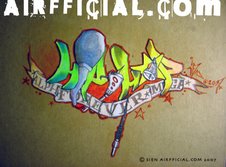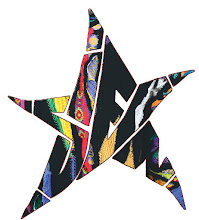::FOTOGRAFFER::
curated by sienide
Eric Orr
NYC artist
NYC artist
Eric Orr is an American artist raised in the heart of New York's South Bronx. He was one of the first graffiti artists of the early 80s to substitute typography in art, using a symbol, character or icon as a moniker. The icon, known as “robothead”, was inspired by the space age and the robotics era. The robot head has become the visual identity associated with his artwork.
Eric’s work is recognized internationally and held in private collections in Europe, Asia-Pacific and North America. He has been featured in numerous exhibitions in art galleries on both coasts of the US and has given live painting exhibitions in North America and the Asia Pacific.
Eric began his career as a graffiti artist in 1978. Fresh out of high school graduation, he was influenced by the desire to enhance his urban environment and project a voice to New York City authorities. By drawing in the subways and street environments of the Bronx, he could use his character as visual language. Through to 1983, he continued to study at the School of Visual Arts (SVA) and the Art Students League.
In the mid 70s, Eric found his passion in art through experimentation with colour and texture.
He was recognized early on by his peers and mentors as a gifted artist. His creativity and ability to work across diverse forums would ensure his future success, from writing in his neighborhood and the New York City subways, to entry into international exhibitions at fine art galleries, and providence from the highly esteemed Sotheby's and Christie's auction houses. He has designed for music recording labels and clothing and apparel lines, and has curated the touring of customized games industry merchandise produced by many of the world’s great street artists.
His affinity with nature has also led him towards creating 3D ecological artforms and using found objects as a canvas. More recently, he has applied his life experience to working with artists and youth in transformational environments within communities.
In 1982, Eric’s style and recognition lead to a meeting with American artist Keith Haring who had been recognized on the New York scene for his "graffiti" and "pop art" images. The two had a fond appreciation of each other’s work and quickly became friends. In 1984 Haring and Orr collaborated on a series of drawings in the New York City subways. The black panel spaces provided a strong backdrop on which to achieve bold drawings in white chalk that were easily identifiable by commuters riding the subway. The drawings stretched from the number 6 Pelham Bay line in the Bronx to the 4 and 5 subway lines to Brooklyn Bridge in Manhattan. Haring’s iconic “radiant baby” and Orr’s “robot head” became part of New York City subway history.
In March 1985 this historical collaborative series was included in a group show at the Librizzi Gallery. One of the drawings would later go on to be part of a moving image presentation for Keith Haring's "Future Primeval" show at the Queens Museum in 1990.
With the application of his robot character, Eric became a featured artist in the Daily News "Fashion sketches" during '84. His comic art icon "Maxwell Robot" appeared in numerous local publications in New York.
Eric continues to draw on his own past and acknowledge other artists whose raw creativity in the gritty streets of New York fuelled the emergence of the hip-hop culture and graffiti artform that has now spread worldwide. In recognition of their contribution to the street art movement and to contemporary art, he continues to incorporate in his artwork the symbols of Jean-Michel Basquiat (crown), Michael Stewart (MS), Keith Haring (triangle for those in the creative arts community who died of AIDS) and other pioneers of New York’s urban cultural expression.
Paralleling his art world in the NYC street culture, Eric was part of the formation of the hip-hop music recording scene in the late 70s. His design talent saw him producing work for DJ and community leader Afrika Bambaataa (often considered the first rapper ever), the brand logo for the Strong City Records label, and legendary hip-hop artists of the 80s such as Jazzy Jay, Don Baron, Busy Bee, Nu-Sounds, Ultimate Force, Masters of Ceremony and Tony D moving into the 90s with the Diggin' In The Crates (DITC) crew lead by Lord Finesse.
Orr took time out of his career in the 1990s to raise a family, returning to become a full time artist in 2003.
Having been brought up in the Bronx, and having seen the plight of children in their need for more nurturing surroundings, Orr says, “I like to work with youth in communities, to assist them to explore their own cultural identity so that they will have the freedom to express this in creative and productive ways for their own careers.”









No comments:
Post a Comment